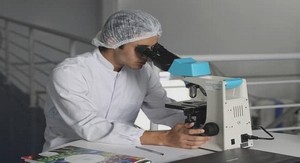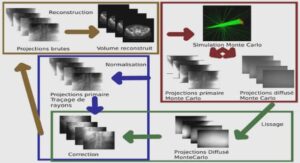Caractérisation et singularités phénotypiques des patients opérés pour hyperparathyroïde primaire étude observationnelle sur 600 patients
L’hyperparathyroïdie primaire (pHPT) est un trouble endocrinien caractérisé par une hypercalcémie (taux de calcium sérique élevé > 10,5 mg/dL ou 2,6 mmol/L) associée à un taux élevé ou anormalement normal de parathormone (PTH) (1). L’incidence de pHPT est d’environ 0,4 à 82 cas pour 100 000 (1, 2), elle augmente avec l’âge et est plus importante chez les femmes post-ménopausées (3). Depuis que la calcémie est dosée en routine, la présentation classique de la maladie est, à ce jour, le plus souvent asymptomatique, même si elle peut encore être à l’origine de complications telles que des lithiases rénales et/ou de l’ostéoporose (3, 4). Dans la littérature, il est rapporté que pHPT est causée par un adénome unique dans 80% des cas, définissant la maladie uniglandulaire (SGD), et, dans 10 à 15% des cas, par de multiples adénomes ou hyperplasies parathyroïdiens, définissant la maladie multiglandulaire (MGD) (5, 6, 7, 8). Dans des cas exceptionnels, pHPT peut être causée par un carcinome parathyroïdien (<1 %). Le seul traitement curatif de pHPT est la chirurgie parathyroïdienne (parathyroïdectomie) et, elle est recommandée lorsque les patients sont symptomatiques ou pour les patients asymptomatiques qui répondent à des critères détaillés dans les dernières recommandations datant du 4e International Workshop publiées en 2014 (9). Deux approches chirurgicales sont donc discutées : la parathyroïdectomie mini-invasive (MIP), lorsque la pHPT est consécutive à une maladie uniglandulaire et, d’autre part, l’exploration cervicale bilatérale lorsqu’une maladie multiglandulaire est suspectée comme en cas d’imagerie négative par exemple (10). Cette dernière intervention chirurgicale est cependant associée à un risque plus élevé d’hypocalcémie postopératoire, d’hématome cervical et de paralysie récurrente du nerf laryngé (11), faisant du diagnostic précis de SGD versus MGD avant la chirurgie un véritable défi pour la prise en charge bénéfique du patient. Les techniques d’imagerie (c’est-à-dire l’échographie cervicale et la scintigraphie au sestamibi) sont couramment utilisées en première intention pour distinguer la SGD et la MGD, bien que leurs valeurs prédictives positives respectives, allant de 80 à 90 %, suggèrent qu’un sous-ensemble de cas de pHPT demeure, finalement, d’étiologie indéterminée (12). D’autres options ont été testées pour préciser la cause de pHPT, comme la mesure des taux de PTH peropératoire, dont une diminution supérieure à 50 % au cours de l’intervention chirurgicale est vraisemblablement prédictive de la SGD (critères de Miami) (13, 14).
Une analyse rétrospective a été réalisée sur des patients opérés d’une parathyroïdectomie pour une pHPT dans notre centre entre 2017 et 2019. Les caractéristiques cliniques et biochimiques ont été comparées entre les patients présentant une pathologie uni- ou multi-glandulaire. Les facteurs de risque associés à la survenue d’une pathologie uni- ou multi-glandulaire ont été identifiés par régression logistique, en analyse univariée puis multivariée (OR, IC 95%). Un recueil de données de 608 patients opérés d’une parathyroïdectomie a été réalisé. 504 patients ont été inclus, nous avons analysé les 220 patients qui présentaient une parathyroïdectomie pour une pHPT entre janvier 2017 et décembre 2019, et un suivi ≥ 3 mois. Parmi ces 220 patients, 200 avaient une maladie uniglandulaire et 20 avaient une maladie multiglandulaire.
Predictive factors of uni- or multiglandular disease in primary hyperparathyroidism: a cohort study
..associated with an elevated or inappropriately normal levels of parathormone (PTH). The only curative treatment is parathyroidectomy, making the characterization of the disease as uniglandular (SGD) or multiglandular (MGD), essential. Our aim was to describe at the clinical, biochemical and imaging levels, causes of pHPT in a large series of operated patients Method: A retrospective analysis was performed on 608 patients with pHPT who underwent parathyroidectomy at our centre between 2017 and 2019. Preoperative clinical and biochemical parameters were compared in patients with SDG and MGD, and differential calcemia (= Cadiagnosis – Calast follow-up) was calculated. Risk factors associated with the occurrence of SGD/MGD were identified using univariate and then multivariate logistic regression (OR, 95% CI). Results: Two hundred and twenty patients underwent parathyroidectomy with postoperative calcemia ≥ 3 months. 200 had SGD and 20 had MGD. We did not observe statistically significant difference between SDG and MGD groups regarding clinical and biochemical parameters. Imaging reports differed significantly with a contributive ultrasonography in 90% of SGD versus 80% in MGD (p = 0.006). In multivariable analysis, histological MGD was independently associated with positive cervical ultrasonography (when > 1 abnormal gland was identified) (OR 27.4, 95% CI: 2.99 to 250.3) and differential calcemia (OR 0.01, 95% CI: 0 to 0.44). Conclusion: Meticulous analysis of the parathyroid glands by ultrasonography remain the gold- standard to predict multiglandular disease in pHPT, which is likely if differential calcemia remains low in the follow-up of the patient.
Material and Methods Study design and data collection
We performed a retrospective monocentric study at the University Hospital of Marseille and reviewed a cohort of 608 patients who underwent parathyroidectomy by 3 endocrine surgeons (FS, CG, CP), between 2017 and 2019. Diagnosis of pHPT was defined by an elevated serum calcium level (> 2.55mmol/l) and an inappropriately normal or elevated PTH level. All the cases were preoperatively discussed during an institutional board that gathered endocrinologist, endocrine surgeons, and nuclear medicine physicians. Patients were included in the study if they had a complete biochemical evaluation including calcemia, albuminemia, phosphatemia, PTH, 24hrs-calciuria, vitamin D and creatininemia. Calcemia was measured by automated techniques, with a normal range of 2.2 – 2.55 mmol/l, adjusted for albumin by the following formula: Corrected calcemia (cacorr) = calcemia measured – 0.025 x (albuminemia – 40). Phosphatemia, magnesemia, creatininemia, were also measured by automated techniques while calciuria was measured by colorimetric method. Were excluded from the study, patients with history of recurrent pHPT (i.e., hypercalcemia which presents after at least 6 months of normocalcemia following successful primary surgery for pHPT), secondary hyperparathyroidism, parathyroid carcinoma, genetically-induced pHPT (MEN syndrome, familial pHPT or multiple endocrine neoplasia syndrome, familial hypocalciuric hypercalcemia), use of lithium or bisphosphonates, and age < 18 years (Figure 1). Clinical criteria such as age, sex, body mass index (BMI), history of kidney lithiasis and/or bone fractures were collected. Once operated, patients had a new laboratory workup, that included calcemia, albuminemia, vitamin D and PTH, in their follow-up and treated with vitamin D3 (100,000 IU/3 months) in case of deficiency (vitamin D < 75 nmol/l). Definitions of cure/persistent and single/multiple glandular disease Cure was defined in our study by the ability the patient had to maintain calcemia ≤ 2.5 mmol/l long after surgery. As such, we focused our analysis on the population of patients with postoperative calcemia (Ca(po)) ≥ 3 months after surgery. In other patients (Ca(po) 7days- 3months), cure was defined by the same cut-off of calcemia, however, we could not guarantee evidence that patient maintain normocalcemia on the long-term. Persistent disease was defined when Ca(po) ≥ 2.6 mmol/l, at least 3 months after the surgery. Calcemia ranging 2.5-2.59 mmol/L were in the grey zone and required a careful analysis.


